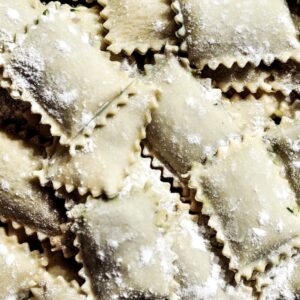The Yoyo Loach, also known as the Pakistani Loach or Almora Loach, is a popular freshwater fish among aquarium enthusiasts. Its scientific name is Botia almorhae, and it belongs to the Botiidae family. This loach is native to the rivers and streams of India, Pakistan, and Nepal, where it inhabits slow-moving waters with sandy or rocky substrates. The Yoyo Loach is known for its distinctive appearance, with a yellowish-brown body covered in dark vertical bands that resemble the letter “Y,” hence its common name. It has a slender, elongated body and can grow up to 6 inches in length in captivity. Yoyo Loaches are peaceful and social fish that thrive in groups, making them an excellent addition to community aquariums.
Key Takeaways
- Yoyo loach, also known as Botia almorhae, is a popular freshwater fish in the aquarium hobby due to its unique appearance and beneficial cleaning behavior.
- Yoyo loaches are active and social fish that exhibit playful behavior and are known for their distinct black and yellow striped patterns.
- Yoyo loaches are excellent algae eaters and can help control and prevent algae growth in aquariums, making them a valuable addition to a community tank.
- Yoyo loaches are efficient detritus cleaners, feeding on leftover food, decaying plant matter, and other organic waste, contributing to a cleaner and healthier aquarium environment.
- Yoyo loaches are natural pest control agents, preying on small snails and controlling their population in the aquarium, making them a valuable asset for maintaining a balanced ecosystem.
Behavior and Characteristics of Yoyo Loach
Yoyo Loaches are known for their active and playful behavior, making them a delight to watch in the aquarium. They are bottom-dwelling fish that spend much of their time foraging for food and exploring their environment. These loaches are also known for their unique swimming style, which involves darting around the tank in quick bursts of speed. Yoyo Loaches are social creatures that thrive in groups of at least three individuals, and they are known to form tight-knit hierarchies within their shoals. Despite their playful nature, Yoyo Loaches can be territorial, especially towards their own kind, so it’s important to provide plenty of hiding places and territories within the aquarium to prevent aggression. Additionally, Yoyo Loaches are known for their sensitivity to water quality, so it’s crucial to maintain pristine water conditions in the aquarium to ensure their health and well-being.
Yoyo Loach as an Algae Eater
One of the most valuable traits of the Yoyo Loach is its voracious appetite for algae. These fish are excellent natural algae eaters and can help keep the aquarium clean and free of unsightly algae growth. Yoyo Loaches have a particular fondness for green algae, black beard algae, and brown diatom algae, which are common nuisances in many aquariums. Their constant grazing on algae helps to prevent its overgrowth and maintain a healthy balance within the tank. Yoyo Loaches use their specialized mouthparts to scrape algae off surfaces, including glass, rocks, and decorations. Their diligent algae-eating habits make them an invaluable asset in the battle against algae overgrowth, reducing the need for manual cleaning and chemical treatments in the aquarium.
Yoyo Loaches are also known to consume leftover fish food and organic debris, further contributing to the overall cleanliness of the aquarium. Their omnivorous diet includes a variety of foods, such as sinking pellets, frozen or live foods, and blanched vegetables. By incorporating Yoyo Loaches into the aquarium ecosystem, aquarists can benefit from their natural algae-eating abilities while also enjoying their lively presence in the tank.
Yoyo Loach as a Detritus Cleaner
In addition to their role as algae eaters, Yoyo Loaches also serve as efficient detritus cleaners in the aquarium. Detritus refers to organic waste material that accumulates at the bottom of the tank, including uneaten food, fish waste, and decaying plant matter. If left unchecked, detritus can contribute to poor water quality and create an unsightly appearance in the aquarium. Yoyo Loaches play a crucial role in consuming detritus and preventing its buildup, thereby helping to maintain a clean and healthy environment for all inhabitants.
These loaches use their keen sense of smell and excellent foraging abilities to locate and consume detritus particles from the substrate. Their constant scavenging behavior helps to break down organic matter and prevent it from decomposing and releasing harmful compounds into the water. By actively consuming detritus, Yoyo Loaches contribute to the overall cleanliness of the aquarium and reduce the need for manual substrate cleaning. Their natural detritus-cleaning abilities make them an invaluable addition to any freshwater aquarium setup.
Yoyo Loach as a Pest Control Agent
Yoyo Loaches are not only adept at maintaining a clean and balanced aquarium environment but also serve as effective pest control agents. In many cases, freshwater aquariums can become infested with unwanted pests such as snails, which can reproduce rapidly and overwhelm the tank if left unchecked. Yoyo Loaches are known for their voracious appetite for snails and can help control snail populations within the aquarium. These loaches use their keen sense of smell and sharp eyesight to hunt down snails hiding in the substrate and vegetation, effectively reducing their numbers over time.
In addition to snails, Yoyo Loaches also consume other small invertebrates such as insect larvae and small crustaceans that may pose a nuisance in the aquarium. Their predatory instincts make them valuable allies in maintaining a balanced ecosystem and preventing pest infestations. By introducing Yoyo Loaches into the aquarium, aquarists can benefit from their natural pest control abilities while enjoying their active and engaging behavior.
Yoyo Loach Care and Maintenance

Proper care and maintenance are essential for ensuring the health and well-being of Yoyo Loaches in the aquarium. These fish require a spacious tank with plenty of hiding places, such as caves, driftwood, and plants, to provide security and territorial boundaries. A sandy or fine-gravel substrate is ideal for Yoyo Loaches, as it mimics their natural habitat and allows them to exhibit their natural foraging behavior. Additionally, maintaining stable water parameters is crucial for the health of Yoyo Loaches, as they are sensitive to fluctuations in water quality.
Yoyo Loaches thrive in well-oxygenated water with moderate water flow, so it’s important to provide adequate filtration and regular water changes to maintain pristine water conditions. These fish are omnivorous and should be offered a varied diet that includes high-quality sinking pellets, frozen or live foods such as bloodworms or brine shrimp, and blanched vegetables like zucchini or cucumber. Feeding should be done in small amounts multiple times a day to ensure that all individuals have access to food.
In conclusion, the Yoyo Loach is a versatile and valuable addition to freshwater aquariums, offering a range of benefits including algae control, detritus cleaning, pest control, and entertainment value. By understanding their behavior and dietary needs, aquarists can provide optimal care for Yoyo Loaches and harness their natural cleaning abilities to maintain a healthy and balanced aquarium ecosystem. With proper care and maintenance, Yoyo Loaches can thrive and contribute to the overall well-being of the aquarium inhabitants while delighting aquarists with their active and engaging presence.
Sure, here’s a paragraph that mentions a related article to yoyo loach and includes a link to the article:
“If you’re interested in learning more about caring for yoyo loaches, be sure to check out ‘The Ultimate Guide to Yoyo Loach Care’ on The Good Sight. This comprehensive article covers everything from tank setup and water conditions to feeding and behavior, providing valuable insights for both new and experienced fish keepers. Click here to read the full article and enhance your knowledge of yoyo loach care.”
FAQs
What is a yoyo loach?
A yoyo loach, also known as Botia almorhae, is a freshwater fish species belonging to the Botiidae family. It is native to South Asia, particularly found in rivers and streams in India, Nepal, and Bangladesh.
What does a yoyo loach look like?
Yoyo loaches have a distinctive appearance with a yellowish-tan body covered in dark, vertical bands resembling the letter “Y” or “O,” hence the name “yoyo.” They have a slender, elongated body and can grow up to 6 inches in length.
What are the ideal tank conditions for yoyo loaches?
Yoyo loaches thrive in a well-maintained aquarium with plenty of hiding spots, such as caves, plants, and driftwood. They prefer a pH range of 6.5-7.5 and a temperature range of 75-86°F. It is important to provide a sandy substrate as they like to burrow.
What do yoyo loaches eat?
Yoyo loaches are omnivorous and will eat a variety of foods including sinking pellets, flakes, frozen or live foods such as bloodworms, brine shrimp, and small crustaceans. They also consume algae and help keep the tank clean.
Are yoyo loaches suitable for community tanks?
Yoyo loaches are generally peaceful and can be kept in community tanks with other non-aggressive fish species of similar size. However, they may exhibit territorial behavior towards their own kind, so it’s best to keep them in groups of 3 or more.
Do yoyo loaches require any special care?
Yoyo loaches are relatively hardy and easy to care for, but they do require a well-oxygenated environment and regular water changes. They are also sensitive to medications containing copper, so caution should be taken when treating them for any illnesses.





